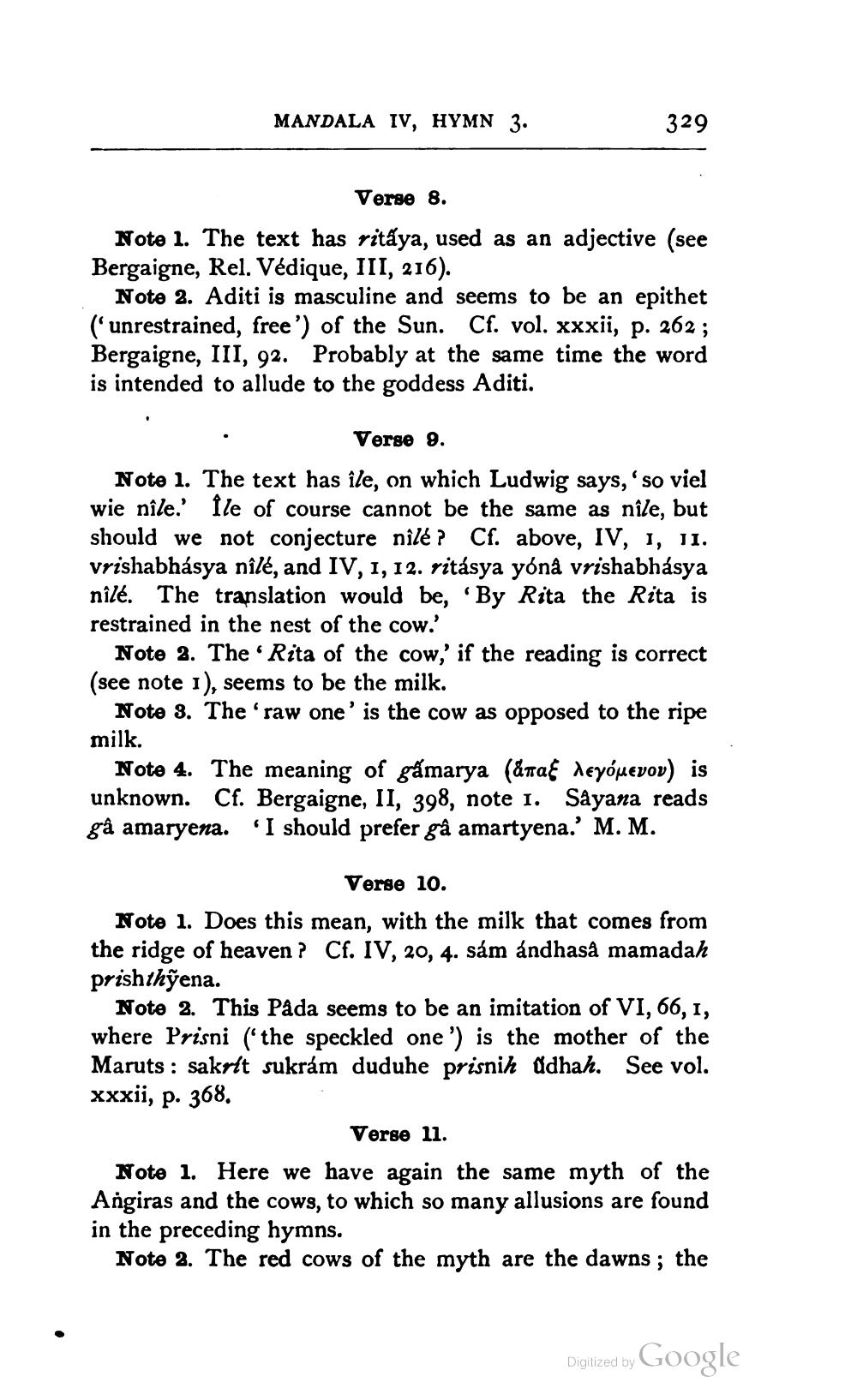________________
MANDALA IV, HYMN 3.
329
Verse 8. Note 1. The text has ritaya, used as an adjective (see Bergaigne, Rel. Védique, III, 216).
Note 2. Aditi is masculine and seems to be an epithet (unrestrained, free') of the Sun. Cf. vol. xxxii, p. 262; Bergaigne, III, 92. Probably at the same time the word is intended to allude to the goddess Aditi.
Verse 3. Note 1. The text has île, on which Ludwig says, 'so viel wie nîle.' Île of course cannot be the same as nîle, but should we not conjecture nilé ? Cf. above, IV, 1, 11. vrishabhásya nilé, and IV, 1, 12. ritásya yónå vrishabhásya nilé. The translation would be, ‘By Rita the Rita is restrained in the nest of the cow.'
Note 2. The Rita of the cow, if the reading is correct (see note 1), seems to be the milk.
Note 3. The 'raw one' is the cow as opposed to the ripe milk.
Note 4. The meaning of gámarya (&tadeyóuevov) is unknown. Cf. Bergaigne, II, 398, note 1. Sayana reads gå amaryena. 'I should prefer gå amartyena.' M. M.
Verse 10. Note 1. Does this mean, with the milk that comes from the ridge of heaven? Cf. IV, 20, 4. sám ándhasa mamadah prishthyena.
Note 2. This Påda seems to be an imitation of VI, 66, 1, where Prisni (the speckled one') is the mother of the Maruts : sakrlt sukrám duduhe prisnih Adhah. See vol. xxxii, p. 368.
Verse 11. Note 1. Here we have again the same myth of the Angiras and the cows, to which so many allusions are found in the preceding hymns.
Note 2. The red cows of the myth are the dawns; the
Digitized by Google




